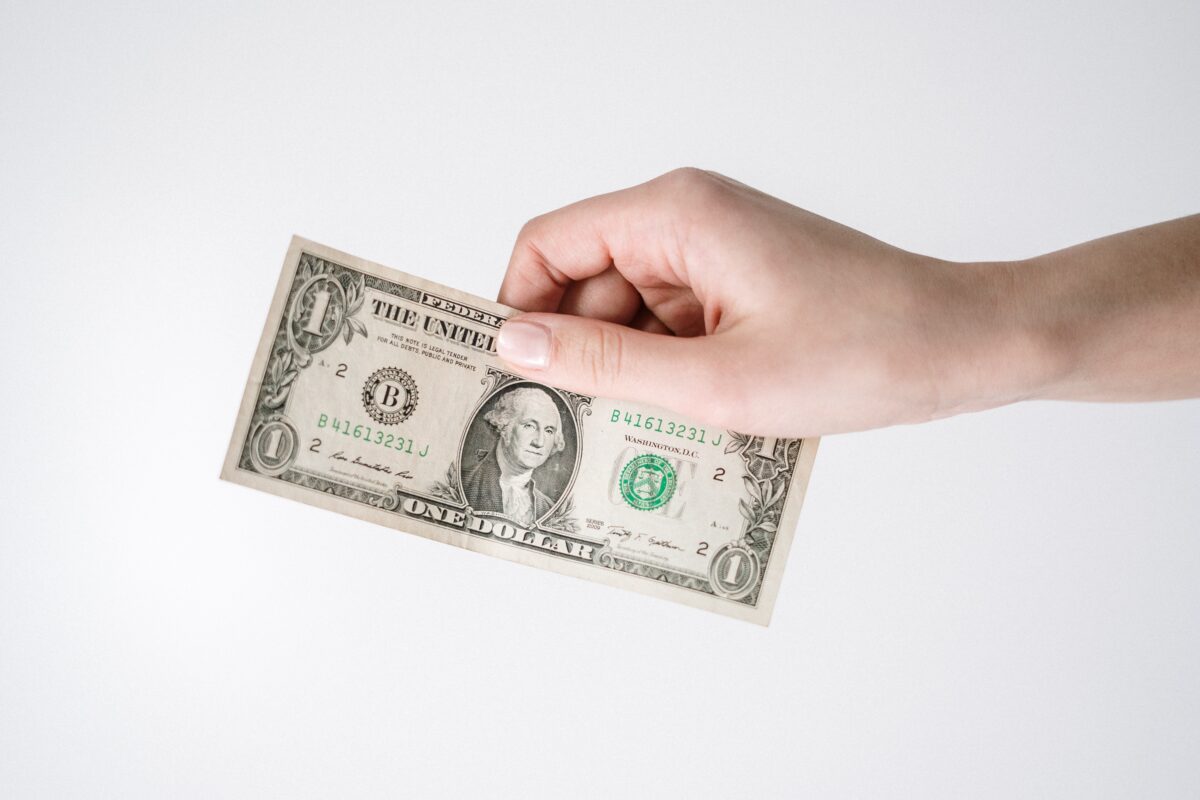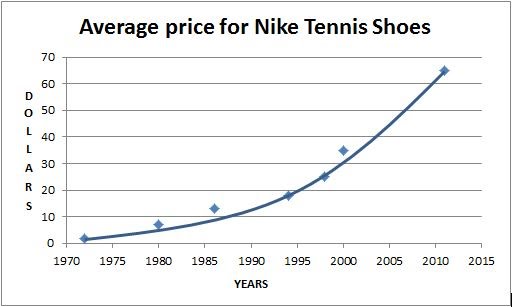How Much $1 Could Buy During The Year You Were Born Shows The Power Of Inflation

Taking trips down memory lane can be fun, but this one, where we look at what $1 could buy you in the year you were born, will bum you out about the sad power of inflation.
The team at GoBankingRates recently cobbled together this list of what things cost in a given year. Whether you’re a Baby Boomer or your a student debt-saddled Millennial, you’ll want to take a look — albeit a depressing one — back at all the stuff money used to buy for $1.
As you’ll see, it is kind of a shock to the system just how much the purchasing power of a $1 has changed over the last 70 years.
How Much $1 Could Buy You In the Year You Were Born
1940-1944
- 1940: School bag, $0.98
- 1941: 2-gallon aquarium, $0.98
- 1942: Women’s dress, $1.00
- 1943: Handbag, $1.00
- 1944: 3-piece toy set (doll, Klik-Klak and teether), $1.05
1945-1954
- 1945: B-29 Boeing Super Fortress Bomber model kit, $0.95
- 1946: 2 RCA Victor records, $0.89
- 1947: Apple tree, $0.98
- 1948: Men’s belt, $0.94
- 1949: Boy’s cotton shirt, $0.97
- 1950: Throw pillow, $0.80
- 1951: Baseball cap, $0.95
- 1952: 1 cake pan & 6 custard cups, $1.05
- 1953: 1 quart of paint, $0.98
- 1954: 4-piece screwdriver set, $0.98
1955-1964
- 1955: 2 McDonald’s meals (1 burger, fries and soda), $0.70
- 1956: Hair spray, $1.05
- 1957: Baby gown, $0.87
- 1958: Bath towel, $0.91
- 1959: Pitcher, $0.91
- 1960: Tights/nylons, $0.94
- 1961: 2 Sunday New York Times, $1.00
- 1962: 1 yard of fabric, $0.94
- 1963: Movie ticket, $0.86
- 1964: 2,000 cigarette papers, $0.97
1965-1974
- 1965: Rifle carrying case, $0.88
- 1966: 3 gallons of gas, $0.96
- 1967: 2 Big Macs, $0.90
- 1968: Baby blanket, $1.00
- 1969: Set of greeting cards, $0.99
- 1970: 2 pillowcases, $0.88
- 1971: Rake, $1.09
- 1972: Wrench, $0.98
- 1973: 6 Hershey’s bars, $0.90
- 1974: Barbie outfit, $0.77
So many thoughts in this grouping. A rake for $1.09. A RAKE! Almost four full gallons of gas for what you can buy a third of a gallon of gas for in 2023.
1975-1984
- 1975: 50 vitamins, $1.00
- 1976: Knee socks, $0.99
- 1977: Skein of yarn, $0.97
- 1978: 6 first-class postage stamps, $0.90
- 1979: 8 guitar picks, $0.98
- 1980: 1/2 gallon milk, $1.02
- 1981: 1 dozen eggs, $0.97
- 1982: Pack of cigarettes, $0.82
- 1983: 2 D batteries, $0.99
- 1984: 1 pound of grapes, $0.99
While we’re between the 70s and 80s, do want to feel even worse? Sure you do. So take a look at the average price of Nike shoes over time.

1985-1994
- 1985: California Lottery ticket, $1
- 1986: 3 shots of bourbon, $0.97
- 1987: 2 bags of gift wrapping bows, $1
- 1988: 4 packs of gum, $1
- 1989: 1 gallon of gas, $1
- 1990: 1 share of Microsoft, $0.94
- 1991: 1 share of Disney, $1
- 1992: 1/2 pound bacon, $0.93
- 1993: 4 vending machine toys/gumballs, $1
- 1994: 1/2 bag of potato chips, $1
1995-2004
- 1995: Ballpoint pen ink refill, $1
- 1996: 1/2 pound chicken breast, $0.96
- 1997: Die-cast Nascar model, $1.33
- 1998: 2 liters cola, $0.98
- 1999: 11 green Lego bricks, $0.98
- 2000: Loaf of bread, $0.99
- 2001: Postage for three letters, $1.02
- 2002: Taco Bell bean burrito, $0.69
- 2003: Ticket to Blink-182’s DollaBill Tour, $1
- 2004: 1 share of Apple, $0.94
One share of Apple was…(holds back tears)…$.94 in 2004.
If that doesn’t fill you with regret, nothing will. But, the good news is: the next Apple is out there, waiting for us to buy it. And that, friends, is what keeps us going.
How Much Value Has The Dollar Lost?
As you can see from the stats above, the U.S. dollar has experienced a significant depreciation in value over the past several decades. But how much value has been flushed down the toilet?
According to statistics from the US Department of Labor, the dollar has lost an eye-popping 86% of its value since 1972, when its worth was $1. This is largely due to inflation rates in the United States that are currently at their highest level since 1981.
Yikes.